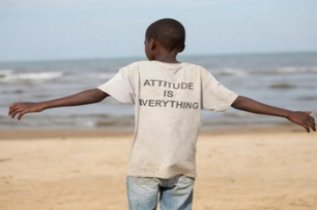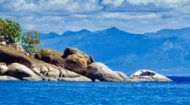|
Life in Malawi
The people of Malawi were originally called the Maravi and they first came to present day Malawi around six hundred years ago, dividing into two groups, one, the forefathers of the present day Chewas, settling on the west bank of Lake Malwai and the other, the forefathers of the Nyanjas, settling on the east bank. These Bantu people formed an empire, but an empire in name only with conflict and division precluding a cohesive society. The official language inside Malawi is English (although many people, particularly in rural areas, speak Chichewa), its currency is the Kwacha, and its people are made up from various cultures. These include the Chewa people who live in the central area, the Nyanja people in the south, the Tumbuko people in the north along with the Tonga, the Ngoni and Ngonde people who live in the lower northern
|






 One important aspect of life in Malawi is dance which is epitomised by the Gule Wamkul. It's the traditional Malawi dance of the Chewa people and reflects the traditional belief of Malawi society in the existence of spirits. Dressed in cloth and animals skins, the dancing is usually performed wearing masks. The dancers even kick up dust in a further attempt to disguise their identities and are traditionally only known to the chief who appointed them to safeguard the village from evil. Whilst the Gule Wamkul is the most popular dancing associated with Malawi, in the north of the country the Vimbuza is danced by the Timbuka people. This is a dance alleged to heal sick patients and is performed by healers and witch doctors. Reports indicate that the Vimbuza is gaining in popularity in recent years and is even being adopted by other tribes such as the Ngoni. Ingoma dancing is one of the most popular dances amongst the Ngoni people of Malawi themselves and was originally performed to celebrate victory in battle with male performers wearing headgear and carrying a spear or club dancing in straight lines whilst the women danced alongside singing and clapping in support of the men's performance.
One important aspect of life in Malawi is dance which is epitomised by the Gule Wamkul. It's the traditional Malawi dance of the Chewa people and reflects the traditional belief of Malawi society in the existence of spirits. Dressed in cloth and animals skins, the dancing is usually performed wearing masks. The dancers even kick up dust in a further attempt to disguise their identities and are traditionally only known to the chief who appointed them to safeguard the village from evil. Whilst the Gule Wamkul is the most popular dancing associated with Malawi, in the north of the country the Vimbuza is danced by the Timbuka people. This is a dance alleged to heal sick patients and is performed by healers and witch doctors. Reports indicate that the Vimbuza is gaining in popularity in recent years and is even being adopted by other tribes such as the Ngoni. Ingoma dancing is one of the most popular dances amongst the Ngoni people of Malawi themselves and was originally performed to celebrate victory in battle with male performers wearing headgear and carrying a spear or club dancing in straight lines whilst the women danced alongside singing and clapping in support of the men's performance. Other popular dances in Malawi include the more recent Kalele or Bewni dancing developed during the world wars based on military parades and the Indingala dance imported into Malawi by the Nyakyusa and Ngonde people as they migrated there from Tanzania. Music in Malawi is different from traditional African music in that it is heavily influenced by its British colonial past as well as its African roots in addition to influences from migrants travelling to and from the country particularly during the second world war. However as the 1960s saw an explosion of new musical styles across the globe, Malawi was gripped by a puritanical dictatorship and all music was restricted to praise of then Malawi president, Dr Hastings Kamuzu Banda. Since his fall in 1994, music has again flourished. Some of the best known musical artists from Malawi include Wambali Mkandawire, Lucius Banda, Tay Grin and Esau Mwamwaya. The video (below) givce a good insight into village life in Malawi with images of its people and landscapes set against a backdrop of traditional Malawi music.
Other popular dances in Malawi include the more recent Kalele or Bewni dancing developed during the world wars based on military parades and the Indingala dance imported into Malawi by the Nyakyusa and Ngonde people as they migrated there from Tanzania. Music in Malawi is different from traditional African music in that it is heavily influenced by its British colonial past as well as its African roots in addition to influences from migrants travelling to and from the country particularly during the second world war. However as the 1960s saw an explosion of new musical styles across the globe, Malawi was gripped by a puritanical dictatorship and all music was restricted to praise of then Malawi president, Dr Hastings Kamuzu Banda. Since his fall in 1994, music has again flourished. Some of the best known musical artists from Malawi include Wambali Mkandawire, Lucius Banda, Tay Grin and Esau Mwamwaya. The video (below) givce a good insight into village life in Malawi with images of its people and landscapes set against a backdrop of traditional Malawi music.


